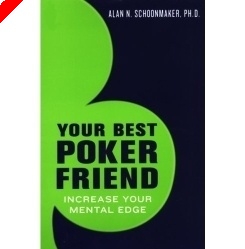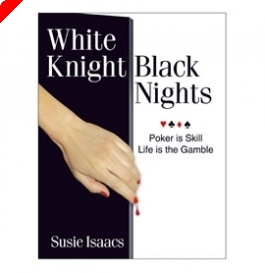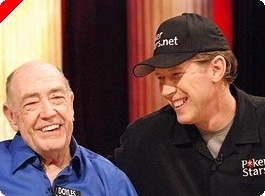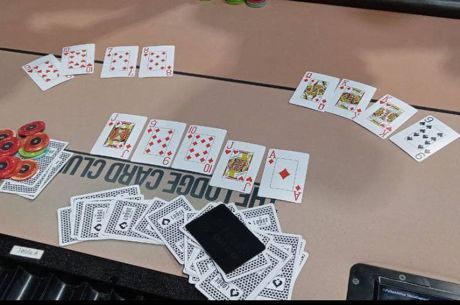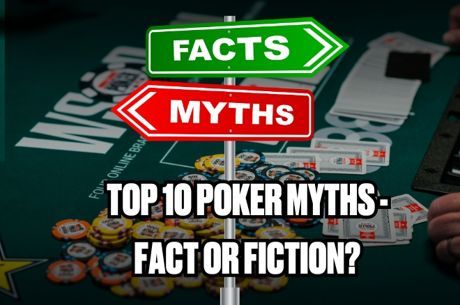Book Review: Gus Hansen's 'Every Hand Revealed'

Few players on the professional circuit invite as much scrutiny for their playing style as does Gus Hansen. The debate began with the very first episode of the World Poker Tour's Season 1 in which the "Great Dane" was shown taking down the 2002 Five Diamond World Poker Classic thanks to a number of unorthodox-seeming plays. ("He played very bad," said Freddy Deeb, one of Hansen's opponents at that final table.) Two more WPT open-event titles, numerous appearances on shows such as "Poker After Dark" and "High Stakes Poker", a victory in the Aussie Millions, and a deep run (61st) in last year's WSOP Main Event have further fueled the firestorm of speculation, causing many to wonder, time and again, "What was Hansen thinking?"
With Every Hand Revealed, Hansen offers an extended reply to that question. Starting from the premise that he has yet to "come across a book that convincingly presents a viable poker strategy based on practice, not theory," Hansen minutely chronicles his 2007 Aussie Millions victory with descriptions of every hand from the beginning of Day 1 to the end of heads-up play in the final. The format recalls recent examples of players such as Greg Raymer and Annette Obrestad making public entire hand histories from their online tourney triumphs, inviting others to extrapolate what they may from such a wealth of detail. The difference, of course, is that Hansen here narrates a live tourney experience, and thus provides a great deal more information than a simple rehearsal of stack sizes, cards dealt, and betting action.
Technically speaking, not every hand from Hansen's Aussie Millions triumph is revealed. Hansen has omitted discussing hands where he folded without any preflop action. Still, that leaves 329 hands for Hansen to tell us about, the pertinent details of which he was able to preserve by recording himself with a portable tape recorder after each hand. Of those, Hansen designates 21 as "crucial hands" that proved especially pivotal when assessing his overall success in the tournament. He also appends a final collection of data describing his play in a chapter cheekily titled "Stats and Tips for all My Fellow Poker Nerds."
What emerges is a remarkably consistent portrait of a player comfortable with taking a high percentage of flops and then exerting maximum pressure on his opponents. As one moves through the book, a number of common themes emerge, including the understanding of the significance of blind/ante structures, the difference between short-handed vs. full table strategies, the importance of zeroing in on opponents' tendencies, and the constant need to remain aware of stack sizes and pot odds. The reader sees Hansen frequently taking advantage of others' timid play during the first and last orbits of each level. One also comes to recognize how Hansen regards limping preflop as rarely a good idea, but calling post-flop with position to be correct perhaps more often than one would think.
In one of his "crucial hands" from Day 3, Hansen describes the thought process that resulted in his deciding to call a check-raise all-in bet from Paul Wasicka on the flop while holding only ace-high and an open-ended straight draw. Aside from taking the usual mathematical calculations into account, Hansen tells how he also considered the less-easily-quantified consequences of his folding. "If I fold this hand and Mr. Wasicka shows me a total air-ball, I will definitely lose some momentum," he explains. "If he elects not to show his hand with a little smirk on his face, uncertainty will creep into my mind and it might take me a while to regain my composure and table presence." This is one of several intriguing passages where Hansen tries to share how such intangibles often have as much to do with one's decision-making as do one's odds and outs.
Experienced MTT players will surely find much of interest here, including a number of hands worthy of lengthy poker forum debates. The book should also appeal to those with less interest and/or patience with such a dense collection of hand analyses, primarily because of the often playful, almost conversational tone Hansen employs. One finds humorous asides and sarcasm throughout the book, and unexpected flashes of wit work well to keep up one's interest in the proceedings.
For example, when telling of one hand in which three players saw the flop, Hansen writes, "I lead out for 66k into a 118k pot, and before you can say 'Phil Hellmuth' they both folded!" �� a funny reference to the Poker Brat's much-cited penchant for making laydowns. One finds other, less-expected allusions sprinkled throughout the text, with Hansen showing himself capable of bringing up Garfield the cat, Allen Iverson, or Kingpin at any given moment. There's even the occasional smiley face (as one might find in an online poker chat box). Most winning are those moments of self-deprecation, whether he's making fun of his wild image or genuinely second-guessing his less than stellar decisions, such as when he tells of a Day 2 hand in which he called down with top pair, thereby letting his opponent catch up and pass him on the river: "I played this hand like a novice, a fish, an idiot!"
By the time we reach the final table with Hansen, we realize that while he has hardly played all 329 of the hands he describes without a misstep, he has made many, many more good decisions than bad ones. And nearly all of them have been informed by careful, strategic thinking. Hansen certainly enjoyed some good fortune along the way in the 2007 Aussie Millions, including when battling back (twice) from a 3-to-1 chip deficit when heads-up against Jimmy Fricke. However, after reading Every Hand Revealed it is clear that when someone subsequently asks the question "What was Hansen thinking?" one reasonable answer should be "A lot."
Every Hand Revealed is due out in May.

